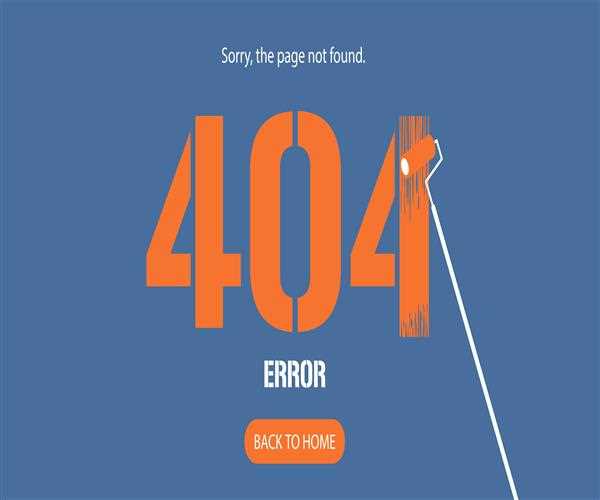Search here

25-Jul-2023 , Updated on 7/25/2023 3:31:34 AM
301 redirects or 404 errors- What's less harmful?
Highlights
- A 301 redirect is generally less harmful as it ensures a smooth user experience and preserves SEO value.
- Using 301 redirects is recommended when you change URLs or remove pages permanently.
- However, using too many 301 redirects unnecessarily can lead to performance issues, so use them judiciously.
- A 404 error page is suitable when a page is truly meant to be removed or does not need to be indexed.
- If there's no appropriate new destination for a redirected page, a 404 error page may be more appropriate.
The digital landscape is constantly evolving, with website owners and developers facing numerous challenges. Among these challenges is the need to handle content changes, URL restructuring, or outdated pages gracefully. When these changes occur, two common approaches are often used: the 301 redirect and the 404 error page.
Both methods serve essential purposes, but each has its advantages and disadvantages in terms of user experience, search engine optimization (SEO), and overall website health. A 301 redirect is a permanent redirect. When a user visits a URL that has been 301 redirected, they are automatically redirected to a new URL. This is useful for when a page has been moved to a new location, or when a website has been redesigned and the old pages are no longer needed.
Let's see how both the concepts serve in SEO
What is a 301 redirect?
A 301 redirect is a permanent redirect. When a user visits a URL that has been 301 redirected, they are automatically redirected to a new URL. This is useful for when a page has been moved to a new location, or when a website has been redesigned and the old pages are no longer needed.
What is a 404 error page?
A 404 error page is a message that is displayed to users when they try to access a page that does not exist. This can happen for a variety of reasons, such as if the page has been deleted, moved, or if there is a typo in the URL.

Which is less harmful- a 301 redirect or a 404 error page?
According to my opinion, a 301 redirect is generally considered to be less harmful than a 404 error page. This is because when a user is redirected to a new URL, they are still able to access the content they were looking for. In contrast, a 404 error page simply tells the user that the page they are looking for does not exist. This can cause users to become frustrated and leave your website.
Here are some of the reasons why a 301 redirect is less harmful than a 404 error page:
SEO benefits- Redirecting a page to a new URL can help to improve your website's SEO. This is because search engines like Google will follow the redirect and update their index accordingly. As a result, the new page will be ranked higher in search results than it would be if it was simply 404. 301 redirects pass most of the link equity and ranking signals from the old URL to the new one. This way, search engines recognize the connection between the two URLs, helping maintain search rankings and organic traffic.
User experience- A 301 redirect is less disruptive to the user experience than a 404 error page. When a user is redirected, they are still able to access the content they were looking for. In contrast, a 404 error page simply tells the user that the page they are looking for does not exist. This can cause users to become frustrated and leave your website.
Brand perception- A 301 redirect can help to improve your website's brand perception. This is because it shows users that you are taking steps to keep your website up-to-date and that you are committed to providing them with a good user experience. In contrast, a 404 error page can give users the impression that your website is not well-maintained or that you do not care about their needs.
Link and Referral Traffic Retention- By employing 301 redirects, those 404 links will be redirected to the new URL, allowing you to capitalize on existing traffic and backlinks.
Canonicalization- When multiple versions of the same content exist due to different URL structures (e.g., HTTP vs. HTTPS, www vs. non-www), 301 redirects can be used to establish a canonical URL, consolidating link authority and preventing duplicate content issues.
How to set up a 301 redirect
There are a few different ways to set up a 301 redirect. The most common way is to use the .htaccess file. The .htaccess file is a configuration file that is used to control the behavior of your website's server.
To set up a 301 redirect using the .htaccess file, you will need to add the following code to the file:
Redirect 301 /old-url /new-url
In this example, the old URL is "/old-url" and the new URL is "/new-url". When a user visits the old URL, they will be automatically redirected to the new URL.
You can also use a third-party plugin to set up 301 redirects. There are a number of different plugins available, so you should be able to find one that works with your website's content management system (CMS).
But obviously , the decision between using a 301 redirect or a 404 error page depends on the specific circumstances and goals of the website. Here are some scenarios where one approach may be more suitable than the other-
Content Permanently Moved- If the content has moved to a new URL permanently, a 301 redirect is the preferred option. It ensures that users are seamlessly redirected to the relevant page and preserves the SEO value of the old URL.
Temporary Changes or Outages- In cases of temporary content unavailability or server issues, a 404 error page is appropriate. It informs users and search engines that the content is currently unavailable and is expected to return later.
Content Deleted or Unavailable- If the content is no longer relevant or available, a 404 error page is more appropriate. Users should be informed that the content is no longer accessible and be provided with alternative options or relevant suggestions.
URL Restructuring- When restructuring URLs or changing website architecture, a combination of 301 redirects and 404 error pages can be used strategically. 301 redirects should be implemented for pages with new URLs, while a custom 404 error page can guide users who land on outdated or removed pages to find the right content.
A 301 redirect is generally considered to be less harmful than a 404 error page. If you have a page on your website that is no longer needed, you should consider setting up a 301 redirect to redirect users to a new page. This will help to improve your website's SEO, user experience, and brand perception.

SEO and Content Writer
I am Drishan vig. I used to write blogs, articles, and stories in a way that entices the audience. I assure you that consistency, style, and tone must be met while writing the content. Working with the clients like bfc, varthana, ITC hotels, indusind, mumpa, mollydolly etc. has made me realized that writing content is not enough but doing seo is the first thing for it.
Join Our Newsletter
Subscribe to our newsletter to receive emails about new views posts, releases and updates.
Copyright 2010 - 2025 MindStick Software Pvt. Ltd. All Rights Reserved Privacy Policy | Terms & Conditions | Cookie Policy